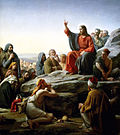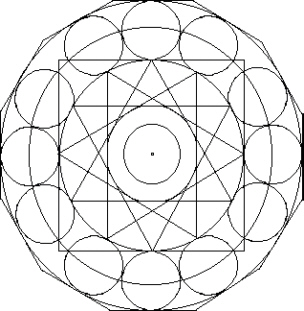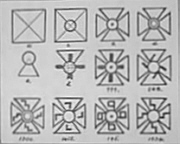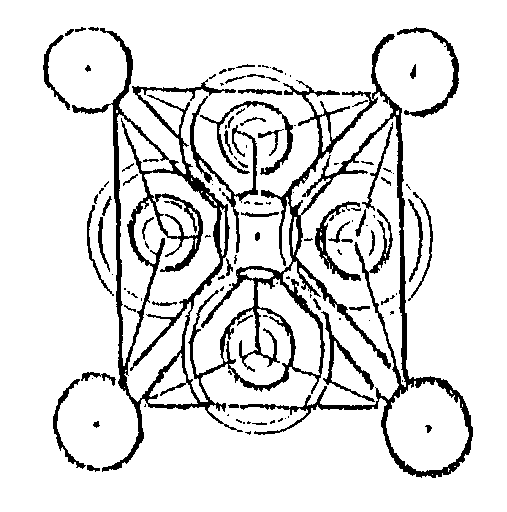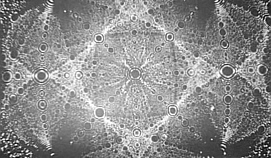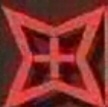THE MOTHER OF PRINCE WILLIAM AND PRINCE HARRY
PRINCESS DIANA
The Aftermath Dream and Events
by Dee Finney
| 7-30-2001 - THE DREAM -
I was trying to write a story about a flower. I was
thinking the flower had
a 5-4 code whch has spiritual symbolism. (flower
code explained)
I scrolled down the page and saw a sort of bush. It had 5
branches on it, but
no flowers.
I then had a vision within the dream. It was rather a
tall rectangle with some
kind of design around the edges that looked like 'black roses'
with a white
center and a wild looking black lion standing upright on two
feet.
NOTE: I believe The 'black rose' represents the 5-4
code.
(It has 5 letters and 4 letters in the two words)
Note also that the first verse of The Book of
Ezekiel says that his vision
took place in the fourth month, on the fifth day of the month.
It is possible
that the date was given to symbolize the 5-4 code, in terms of
the day and
month. (explanation given below in the flower
code)
After I woke up I remembered having seen a video the
other day which
was made a couple of days after the death of Princess Diana. In
the photo
was Queen Elizabeth making a speech on behalf of Princess Diana,
and
behind her a banner or flag with this same upright lion in the
center of the
flag. All day I thought the upright beast was a dragon, but
when I finally
found the flag, which was Princess Diana's official flag, I
could see why I
was confused. Princess Diana's Lion looks very
dragon-like.
GIVE THE GIFT OF FLOWERS
|
|
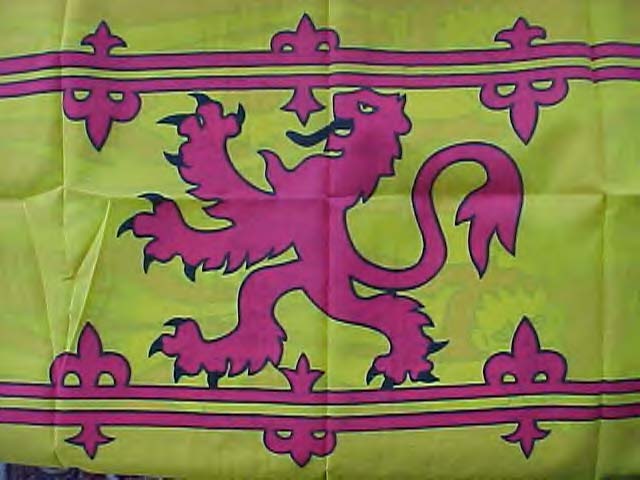
|
|
|
| The color black symbolism: Sable
or black - Constancy, sometimes grief.
The black Rose symbolism: The Rose
Croix symbolism which is also black.
The symbolism of the Five Branches on the Bush:
As heir to the heir of the
throne, Prince William’s label given to him on his 18th birthday
has three
points. Other grandchildren of the monarch have labels with
branches of
five points. Note that in the dream, the branches had no
flowers on them,
thus never bloom.
|
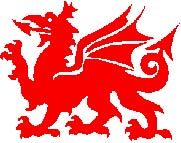
From Sean David Morton:
The current British royal family are imposters. The House of
Windsor is a fraud. They are Asiatic/Mongols who usurped the true power
of the Stewart clan in recent times, and in ancient times conspired with
the Roman Catholics to commit Regicide and Theocide by murdering King
Dagobert and his son Sigisbert. Sigisbert escaped with his sister to
carry on the bloodline Even the flag of the Windsor's and the Prince of
Wales is the Red Dragon which shows their descendence from CHINA, whose
symbol is the same red dragon.
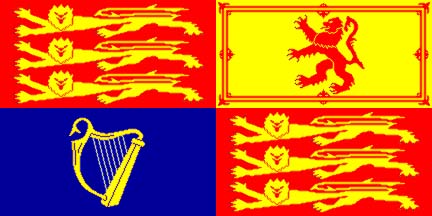
Windsor Castle is used by Queen Elizabeth II as her official
residence and a flag flies above the castle when she is in residence.
The State Apartments are the formal rooms which are used for ceremonial,
official and state occasions
The "Birthright " of the Queen Mother, the mother of
Elizabeth II, has been questioned since her birth, when it was widely
known in England, that she was quite possibly the true daughter of one
of the King's maids. All British birth certificates must be filed within
9 days of birth. The Queen Mum's was not filed for nearly 3 months,
while a debate raged in the palace. The official excuse was that the
Royal Family had simply "Forgot".
But the lineage of Lady Diana Spencer goes back to Charles II
of the House of Stewart. The Stewarts are *TRUE* royalty, being direct
descendents of The House of David of Judah, and Jesus and Mary the
Magdalene. So, Diana's sons, William and Harry, have three-quarters true
nobility in their blood, and everyone in England knows that Diana was of
"Bluer" blood, and closer to the Royal Lineage than Charles or the rest
of his Imposter Family.
St. George's cult in England began when the Crusaders
returned from the Holy Land with tales of how King Richard "the
Lionheart" had fought under his banner at the Siege of Antioch in 1098
and won a great victory. He became the "knight in shining armour" to
which every young Englishman aspired. His tales of heroism became
legendary and his exploits were gradually transferred from Palestine to
England.
His most famous legend tells how he rescued a princess by
slaying a dragon on a Berkshire hill. This fire-breathing monster had
been terrorising the local townsfolk who had attempted to appease it
with the daily sacrifice of a live sheep. When this tact failed, they
turned to the local maidens. When the king's beautiful daughter was
chosen for this fate, she went to her doom dressed as a bride. At the
very last minute, St. George appeared on a white charger and won the
day.
Over the centuries, St. George has been associated with six
British kings. His cross, red on white, is flown as the flag of England.
His emblem, the rose, which comes from Persia, is the symbol of the
British Empire. And King George VI, during the Second World War, created
the George Cross and George Medal as decorations for gallantry, second
only to the Victoria Cross.
The beasts in St. George's Hall, Windsor Castle, were a
Golden Wedding present to the Queen and The Duke of Edinburgh from the
City of London. In the foreground can be seen a unicorn wearing a royal
coronet as a collar, a lion royally crowned is in the background. The
use of the lion and unicorn as supporters to the royal arms dates back
to the accession of James VI (of Scotland) and I (of England) in 1603.
(To the right can be seen part of the equestrian figure of the King's
Champion. The Champion used to ride in to the Coronation Banqet in
Westminster Hall to throw down his gauntlet and challenge anyone to deny
the new sovereign. This ceremony ceased after George IV's coronation in
1821)
What are The Queen's Beasts?
Heraldic beasts have been depicted since medieval times as
supporters in coats of arms, and carved stone figures of such creatures
were widely used to decorate castles, palaces and public buildings,
particularly in the fifteenth and sixteenth centuries. One example is
the series of King's Beasts mounted on the bridge leading to the
entrance of Hampton Court Palace - originally placed there to celebrate
Henry VIII's marriage to Jane Seymour, the beasts were demolished in
William III's reign and subsequently replaced in 1909. The figures on
the bridge today date from 1950.
For the coronation of The Queen in 1953, a special series of
ten heraldic beasts was devised and created to illustrate her ancestry.
The beasts were 6 feet tall, and positioned at Westminster Abbey to
mount guard over the place of The Queen's crowning. A set of The Queen's
Beasts was carved in stone and these can be seen in the Royal Botanic
Gardens at Kew.
The ten beasts, and the shields they hold, portray The
Queen's royal ancestry. The are: the lion of England supporting the
royal arms of the United Kingdom; the griffin of Edward III holding the
badge of the Royal House of Windsor; the falcon of the Plantagenets
bearing the golden fetterlock badge of the House of York; the black bull
of Clarence supporting the royal arms used from 1405 to 1603; the white
lion of Mortimer holding a badge with the white rose of York; the
Beaufort yale (a heraldic antelope able to swivel its horns to counter
an attack from any side), representing the House of Lancaster, bearing a
crowned portcullis badge; the greyhound of Richmond supporting a Tudor
rose badge; the red dragon of Wales supporting the arms of the princes
of North Wales; the unicorn of Scotland holding a shield of the old
royal arms of Scotland; and the white horse of Hanover supporting the
royal arms used from 1714 until 1800.
Other examples of royal heraldic beasts can be seen at St
George's Chapel, Windsor Castle, where 76 beasts of 14 different types
are represented; known as the Windsor Beasts, they decorate the Chapel
roof. Among the fourteen different types, there are six beasts unique to
this Windsor series: the white swan of Bohun holds the arms of Bohun
(the family of Henry IV's first wife Mary); the white hart of Richard II
supports a shild depicting a badge of broom-pods (planta genista - a pun
on the name Plantagenet); a silver antelope, wearing a golden circlet
and chained, bears the arms of France and England quartered; the black
dragon of the Earls of Ulster supports the red cross on gold of the de
Burgh family, from whom the Yorkist kings were descended; and the
unicorn of Edward III and the hind of Edward V hold vanes (a type of
flag) rather than shields.
What is a Dragon?
Prince William's Heraldry - (received on his 18th
birthday)
L O N D O N, July 10 — British royals mark their coming of age a bit
differently than the rest of the world.
Rather than showing off a driver’s license as proof of
maturity and almost all-grown-up status, a royal displays a coat of
arms.
And when the coat of arms of 18-year-old Prince William was
unveiled Sunday, the son of the late Princess Diana made his first mark
on the traditions of the royal family.
The Prince asked that a small, red scallop shell be
incorporated into the design of his personal coat of arms. The shell has
been a motif in the coats of arms of Diana’s ancestors, the Earls
Spencer, since the 16th century, and was used by Diana in her own coat
of arms.
Every member of the royal family gets to choose a way to
personalize the royal arms a little bit. It’s called a “mark of
difference.”
But William’s little shell is a big deal. Traditionally, the
chosen mark of difference is derived from the symbols of the father’s
side of the family, not the mother’s.
“It is a welcome innovation to incorporate maternal symbols
into the royal family’s arms and it is something that Prince William and
his family wanted to do,” said Peter Gwynne-Jones, who is responsible
for royal heraldry. “In the fullness of time, Prince William’s arms will
change, as the Prince of Wales’s shall, but a precedent has been set
here that others in the royal family may well follow.”
The shell design appears four times in the coat of arms for
the future king, wherever the “label” appears: on the shield, on the
necks of the lion and the unicorn supporting the shield, and on the neck
of the small lion device above the shield.
As heir to the heir of the throne, William’s label has three
points. Other grandchildren of the monarch have labels with branches of
five points.
Prince William’s arms also incorporate aspects of the royal
arms used by his grandmother, Queen Elizabeth II, and those of his
father, Prince Charles. Both Charles and the Queen have approved
William’s coat of arms, and a royal license is being drawn up to
officially grant it to the Prince.
|
FLOWER CODE
EXPLAINED BRIEFLY
Information excerpts taken from:
http://www.greatdreams.com/plpath5.htm
and
http://www.greatdreams.com/plpath6.htm
by Joe Mason
On October 30, 1990, I awoke from dreaming, and
"knew" the meaning of the interlocking rings in a circle I had
seen. The flower-like shape was a symbol of the Soul, or
Oversoul. Each "petal," with a face inside, represents a
reincarnational or "focus" personality sent out into space-time.
The arrangement beautifully symbolizes the fully integrated
Oversoul, the condition that is reached after the
reincarnational cycle is finished. The personalities merge into
one being, similar to the concept of Nirvana, except their
individual personalities are fully retained.
The Oversoul "flowers" are themselves part of
another, larger "flower," or circle of hoops, forming a greater
"flower" of consciousness. The relationship of "flowers"
continues up to the One Great Flower, of the All, or Creative
Source.
A paradox exists that is nearly impossilbe for us to
understand in our space-time reality, as it is somewhat of an
illusion. In the greater reality, there is no time, so the
reincarnational personalities all exist in the eternal Now.
The New Jerusalem was seen in a
vision by St. John (Revelation
21) near the beginning of the Age of Pisces about 2,000
years ago. It represents the divine order of the heavens made
apparent on earth. The diagram was first published in John
Michell's "City of Revelation" and is further examined in books
such as "The New View over Atlantis" and "The Dimensions of
Paradise." It is the underlying plan of Stonehenge, built almost
4,000 years ago near the beginning of the Age of Aries, and
versions of it appear in eastern mandalas, Gothic cathedral rose
windows and other symbols of the universe worldwide.
This is "The New Jerusalem Plan,"
according to John Michell -
 After I learned about The New Jerusalem Plan, I thought about
the similar patterns that came to me. The twelve-pointed star is
formed by four overlapping triangles. The diagram of the
pyramid, as viewed from above, and corresponding to the
quintuplet set of crop circles, also had four triangles . . .
the four faces of the pyramid. By changing the shape of the
triangles, based on the perspective of the viewer, the four
triangles could also be put into a Teutonic Cross. I remembered
that a twelve-pointed star and a Teutonic Cross had been found
by dowsing within crop circle formations. The basic pattern of
The New Jerusalem Plan had also been found within a crop circle
formation.
After I learned about The New Jerusalem Plan, I thought about
the similar patterns that came to me. The twelve-pointed star is
formed by four overlapping triangles. The diagram of the
pyramid, as viewed from above, and corresponding to the
quintuplet set of crop circles, also had four triangles . . .
the four faces of the pyramid. By changing the shape of the
triangles, based on the perspective of the viewer, the four
triangles could also be put into a Teutonic Cross. I remembered
that a twelve-pointed star and a Teutonic Cross had been found
by dowsing within crop circle formations. The basic pattern of
The New Jerusalem Plan had also been found within a crop circle
formation.
I later found page 73 in The Sacred
Symbols of Mu with these depictions -
(Note the comparison of these Teutonic
Crosses
with those of Great Britain Royalty and the Knights Templar)
James Churchward explains -
"The Pyramid
Cross. Line 1 - A group of Crosses among Niven's collection
of Mexican tablets is especially interesting. I have called
them the Pyramid Crosses because they are designed on the
lines of a pyramid. They are the cosmogony of a pyramid
illustrated by a cross.
The four arms are
composed of four triangles corresponding with the four sides
of a pyramid.
The points of
these triangles are covered with the monotheistic symbol of
the Deity.
The base of a
pyramid is square; the four triangles brought together form
a square. The pyramid is built on astronomical lines; so is
the Cross.
Ezekiel's
Four Living Creatures
Another breakthrough came to me many
months later, in 1992. I read several references to
Ezekiel's vision of the Four Living Creatures, including the
idea that the four creatures represent the Zodiac signs
corresponding to the positions of the solstices and
equinoxes during the Age of Taurus. I opened my Bible, and
read the verses. I felt that coincidence was at work again,
as the description seemed to fit with my drawing of the
pyramid formed by the four triangles based on the Barbury
Castle crop formation. But, in my illustration, I had not
drawn in the central circle with rings within the triangles.
These seemed to correspond to the "four wheels" described by
Ezekiel. I then drew in the circles with rings inside each
of the four triangles -
By reading the first page of Ezekiel,
and comparing it to the illustration, one can see the
connections. I will relate the comparisons that came to mind
as I read the verses of Ezekiel -
1:4 As I
looked, behold, a stormy wind came out of the north, and
a great cloud, with brightness round about it, and fire
flashing forth continually, and in the midst of the
fire, as it were gleaming bronze. And from the midst of
it came the likeness of four living creatures. And this
was their appearance: they had the form of men, but each
had four faces, and each of them had four wings.
Comparison: The segments within each
triangle can be viewed as wing-like. The central circle in
the illustration contains four overlapping circles, perhaps
corresponding to the "four faces." Another possibility is
this - each triangle may represent a tetrahedron, a
three-sided pyramid shape. The three sides plus the bottom
(another triangle) has "four faces."
1:7 Their
legs were straight, and the soles of their feet were
like the sole of a calf's foot; and they sparkled like
burnished bronze. Under their wings on their four sides
they had human hands. And the four had their faces and
their wings thus: their wings touched one another; they
went every one straight forward, without turning as they
went.
Comparison: The "four sides" could also
suggest tetrahedrons. The "wings touched one another," just
as the corresponding wing-like shapes in the illustration
"touch." The last part of the verse seems to indicate that
the shape retains its form as it moves.
1:10 As for
the likeness of their faces, each had the face of a man
in front; the four had the face of a lion on the right
side, the four had the face of an ox on the left side,
and the four had the face of an eagle at the back.
11Such were their faces. And their wings
were spread out above; each creature had two wings, each
of which touched the wing of another, while two covered
their bodies.
Comparison: As I mentioned, the four
living creatures are thought to represent Zodiac signs. I
first read about the idea in 1990, in Joseph Campbell's
The Inner Reaches Of Outer Space. A photograph is
shown on page 77 of a "chimeral cherub," a large limestone
carving. It is a portal guardian from the palace of
Ashurnasirpal II at Nimrud, Assyria, 833-859 BC. The
chimeral cherub combines the body of a bull, feet of a lion,
wings and breast of an eagle, and a human head wearing a
miter with six horns. Ezekiel lived during the late 6th
century BC, and was located in the area of Babylon, so it is
likely that he was familiar with this symbolism. The four
living creatures correspond to the Zodiac signs during the
Age of Taurus in this way -
Lion = Leo - summer solstice
Ox = Taurus - spring equinox
Eagle (which later became Scorpio) = autumnal equinox
Man = Aquarius, the Water Bearer - winter solstice
The same four triangles in The New
Jerusalem Plan design, when viewed as a Zodiac, represent
three Zodiac signs each, with the same "four living
creatures" above included in each, that is, one tip of each
triangle touches the corresponding Zodiac signs . . . which
are represented by the circles in my three illustrations.
The image of "two wings" that are
"spread out above," could be similar to the Teutonic Cross
design. In my drawing of the Teutonic Cross shape, the
"wings" do not touch. However, the description seems
similar.
1:12 And each
went straight forward; wherever the spirit would go,
they went, without turning as they went. 13In
the midst of the living creatures there was something
that looked like burning coals of fire, like torches
moving to and fro among the living creatures; and the
fire was bright, and out of the fire went forth
lightning. And the living creatures darted to and fro,
like a flash of lightning.
1:15 Now as I
looked at the living creatures, I saw a wheel upon the
earth beside the living creatures, one for each of the
four of them. As for the appearance of the wheels and
their construction: their appearance was like the
gleaming of a chrysolite; and the four had the same
likeness, their construction being as it were a wheel
within a wheel. When they went, they went in any of
their four directions without turning as they went. The
four wheels had rims and they had spokes; and their rims
were full of eyes round about.
Comparison: The idea that the shape is
"full of eyes," may correspond to the ancient glyph of the
eye within the triangle, as "The Monotheistic Deity looking
out from Heaven." It is quite similar to other ancient
glyphs with the circle and ring within a triangle,
representing "The Monotheistic Deity in Heaven." The
expression, "His Eye is on the sparrow" (or bird), may be a
clue. A bird's eye has no lid, so it is round, a circle with
ring.
1:19 And when
the living creatures went, the wheels went beside them;
and when the living creatures rose from the earth, the
wheels rose. Wherever the spirit would go, they went,
and the wheels rose along with them; for the spirit of
the living creatures was in the wheels. When those
stood, these stood; and when those rose from the earth,
the wheels rose along with them; for the spirit of the
living creatures was in the wheels.
1:22 Over the
heads of the living creatures there was the likeness of
a firmament, shining like crystal, spread out above
their heads. And under the firmament their wings were
stretched out straight, one toward another; and each
creature had two wings covering its body. And when they
went, I heard the sound of their wings like the sound of
many waters, like the thunder of the Almighty, a sound
of tumult like the sound of a host; when they stood
still, they let down their wings. And there came a voice
from above the firmament over their heads; when they
stood still, they let down their wings.
Comparison:
Again, the image of the two "wings" of each creature
"stretched out straight" could be similar to the Teutonic
Cross design. Standing "still" and letting "down their
wings," seems similar to lowering the bases of the triangles
to form the pyramid . . . or perhaps, the capstone of the
pyramid. Such imagery is said by some to represent Christ's
return. It brings to mind the pyramid symbol placed on
American money. The triangle with the eye inside is
suspended above the flat-topped pyramid. According to Joseph
Campbell, this is the Eye of the Holy Spirit. He also made
this observation:
"One cannot
but think of representations in European medieval art of
Christ of the Second Coming, surrounded by four figures
symbolizing the evangelists, Matthew, Mark, Luke, and
John - namely, a man, a lion, a bull, and an eagle, . .
. "
The words, "the sound of many waters"
also appear in Revelation 1:15, in describing the voice of
the son of man. The harlot of Revelation 17:1 is seated upon
"many waters." The "waters" where the harlot is seated is
explained in Revelation 17:15 as "peoples and multitudes and
nations and tongues." Assuming a consistency in the verses,
it seems clear that "many waters" refer to all the people of
the earth. This fits well, I believe, with the idea that the
four living creatures are connected with the twelve Zodiac
signs, because every person on the earth is born "under" one
of these signs. The son of man in Revelation 1:15, then, may
well represent many people speaking in the future.
Revelation 1:16 says, ". .
. from his mouth issued a sharp two-edged sword."
The verses of Ezekiel that follow speak
of the throne above the firmament, with a human form seated
upon it. A bright rainbow was round about the throne.
Revelation 4 also speaks of the four
living creatures, the throne and the rainbow. In Saint
John's vision, the rainbow appeared like emerald. Each of
the four living creatures have six wings. Revelation 4:4
gives additional information -
Round the
throne were twenty-four thrones, and seated on the
thrones were twenty-four elders, clad in white garments,
with gold crowns upon their heads.
There are a number of hints that these
symbols represent subatomic particles. James Churchward
wrote that the Chinese "Great Y" has the same meaning
as the circle with ring inside the triangle. In Dali's
"cosmic dream," that helped inspire him to paint
Christ of Saint John of the Cross, the circle within
the triangle represented the nucleus of the atom and the
unity of the universe.
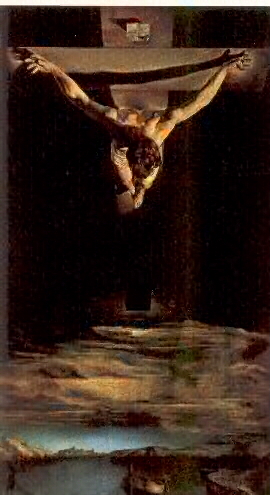
|
|
CHRIST OF ST. JOHN OF THE CROSS
by Salvador Dali
1951
|
DREAMS OF THE
BULL, BISON, BUFFALO
THE CREATION, DEATH /DESTRUCTION PROCESS
I later found a diagram in Sufi,
Expressions of the Mystic Quest, that is quite
similar to the painting by Dali above.
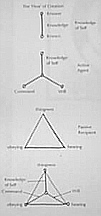
It is part of several that represent how creation is
created. It is said that the "why" of creation is "For
Knowledge of Self." The Divine is Infinite and Knowledge of
Self is part of Its Infiniteness. The "How" of creation is
diagrammed as shown above. Creation begins with the One
point, and becomes the line labeled, "Knowledge of Self."
The top circle of the line is "Knower." The line is
"knowledge." The bottom circle of the line is "Known." The
second glyph, which looks like an upside-down "Y," is
labeled "Active Agent." The top arm of the upside-down "Y"
is "Knowledge of Self," which is the same as the top glyph,
the line. The left arm of the upside-down "Y" is "Command."
The right arm is "Will." The third glyph, the plane
triangle, is labeled "Passive Recipient." The top, left, and
right points of the triangle are "thingness, obeying" and
"hearing." The bottom glyph combines the upside-down "Y"
-shape within the triangle.
In The Book of Knowledge, The
Keys of Enoch, Dr. Hurtak wrote that the Eye of YHWH
(God) is within each pyramid of Light. Various
triangle-tetrahedron shapes are illustrated in the book,
including tetrahedral shapes on Mars, and a tetrahedral-like
depiction on a map of the world, at Giza.
When the four triangles are placed
together in the pyramid shape, as in my illustration, it
looks similar to platinum crystals under a powerful
microscope -
______________________________
The Four
Living Creatures and the Sri Yantra
After I read Ezekiel's vision, I took a
photocopy of my illustration of the pyramid design, and drew
in the four "wheels," that is, a circle with two rings drawn
upon each of the four triangles. That is the illustration
above. As I gazed upon the new drawing, I suddenly realized
that incredible coincidence had struck again. When viewed
diagonally, the shape had the same arrangement of nine
circular areas as the other designs I had drawn earlier. It
has the same basic layout as my nine chits in
the diamond arrangement, that had proven so very
coincidental. (See the linked articles above)
I then realized the illustration also
had the 5-4 code, as I originally suspected from the Dali
painting, Animated Still Life, and which
proved to be true of the Sri Yantra in terms of its upward
and downward triangles. In the above illustration, the
quintuplet of circles are the 5, and the "wheels" are the 4.
The circles mark the four corners and apex of the pyramid,
and the four "wheels" mark the four sides.
The first verse of The Book of
Ezekiel says that his vision took place in the
fourth month, on the fifth day of the month. I wondered if
it could be that the date was timed to give the 5-4 code, in
terms of the day and month.
My original feeling about Dali's
Animated Still Life was that it symbolised how
physical reality is created by thought forms. After I drew
the pyramid shape, based of the triangular crop formation, I
noticed that a four-pointed star could also be derived from
it. This shape was also within one of my drawings of the
four couples around a square. I realized that the pattern is
quite similar to the designs on the the right side of the
table in Dali's painting.
The left side of the table is covered
by a white tablecloth. The right side seems to show what
lies under the white tablecloth, that is, a pattern of
creation.
|
More Shocking News About Diana's Death
14-Dec-2006
It was recently reported the shocking revelation that at the
time of her death in 1997, Princess Diana was being bugged
by our largest spy
agency, the NSA, which does electronic eavesdropping. Sources
say they were probably monitoring
Diana's friendship with
controversial financier Teddy Forstmann. A British investigation
into her death reveals more
incredible facts that
Americans have never heard.
In
the Independent, Guy Davis writes that the report shows that
"there was no cover-up, no murder plot, and no
sabotage." The Princess was
killed when her car, which was being driven by a drunk Henri
Paul while they were chased
by several paparazzi
photographers, crashed into a pillar in the Pont d'Alma tunnel.
She wasn't wearing a seatbelt.
This is all known, but some
surprising new facts have also been revealed.
The
father of Diana's lover Dodi, Mohammed Fayed, has long asserted
that the British secret service murdered Diana
because she was pregnant with
his child, who would have been half-Muslim. But during an
autopsy, no evidence of Diana
being pregnant was found and
the blood in the car did not reveal the hormone levels of a
pregnant woman. Also, Diana's
close friend Rosa Monckton says
that ten days before, when she and Diana were on holiday
together, the princess told
her that her period had
started.
Monte Carlo
jeweler Alberto Repossi claimed that Dodi and Diana purchased an
emerald and diamond engagement ring
worth several hundred thousand
dollars a few weeks before their deaths. Although he said he had
security camera footage
and a receipt to prove this, he later
recanted his statement.
Lord Stevens,
who is in charge of the investigation, interviewed Prince
Charles and Diana's butler Paul Burrell about a
note that was written by Diana 10
months before her death, which said, "My husband is planning an
'accident' in my car,
brake failure and serious head
injury, to make the path clear for him to marry." But the crash
was caused by Henri Paul
driving too fast, not by brake
failure. HOWEVER, it has now been revealed that Henri Paul was
secretly working for the
French intelligence services at the
time of the crash, and there is evidence he may have been
working for the British
secret service as well. But it's not
likely that Paul would have conspired in a plot that led to his
own death. He was not
known to be an alcoholic, but a
post-mortem examination of his body shows that his blood alcohol
level was over the
legal limit.
Despite the
fact that there were over 14 closed-circuit cameras in the Pont
d'Alma tunnel where the crash occurred,
none of them recorded the fatal
crash. Sources say they were either switched off or faced
towards the wall—but why
would this be the case? Also, one
driver got a speeding ticket 15 minutes before the crash, so the
cameras were
working then.
Pedestrians and
ther drivers reported seeing a white Fiat Uno crash into the
Mercedes containing Diana and Dodi as
their car entered the tunnel. Traces
of white paint were found on the wrecked Mercedes, and part of a
bumper and
tail light were found nearby, but
despite a huge database search of over 100,000 cars, the car and
driver were never
found. HOWEVER, the French
photographer James Andason, who had been stalking Dodi and
Diana, owned a white
Fiat Uno. This was sold and repainted
a few days after the crash. Like Henri Paul, HE WAS ALSO BEING
PAID BY THE
BRITISH SECRET SERVICE. He said he
had not been in Paris that night, but he could not be questioned
again, because
three years later, the burned remains
of his body were found in an abandoned car in the south of
France.
|
Princess Diana Bugged by US Gov.
12-Dec-2006
A new British
investigation into the the August 31st, 1997 death of Princess
Diana and Dodi Fayed reveals that the National
Security Agency (NSA) was secretly bugging
Diana's phone when their car crashed in a tunnel in Paris while
they were being
chased by photographers. The crash killed
them both.
The report shows that
the blood of their driver, Henri Paul, tested as being more than
three times over the French limit for
drunken driving. This indicates that the
cause of the crash is probably due to Henri Paul's reckless
driving, but it DOESN'T
explain why the NSA was involved. It has
been discovered that they were listening in on Diana's cell
phone conversations,
WITHOUT the approval of the British secret
service. However, Jason Bennetto writes in the Independent that
the CIA has
told British intelligence that her "final
conversations while staying at the Ritz hotel did not reveal
anything that might explain
her death."
The NSA denies that
they ever listened in on Diana's calls.
|
A report on the inquest into the death of
Princess Diana that was being prepared by UK Metropolitan Police
Commissioner
Lord Stevens has been delayed after Royal
Coroner Michael Burgess stepped down, claiming an excessive
workload.
Prior to her death,
Princess Diana claimed in a letter that her husband, Prince
Charles, was planning to kill her, and Mohammed
al Fayed, her lover's father, has
questioned previous conclusions that the deaths of the Princess
and his son, Dodi al Fayed, were
the result of an auto accident.
Lady Elizabeth
Butler-Sloss has taken over the inquiry, and will review
documents relating to the deaths. She has been a High
Court and Appeals Court Judge, and
President of the Family Division, and is greatly respected
within the British judiciary.
There is public
concern that crucial elements of the case have not yet been
revealed, and it is hoped that Lady Butler-Sloss will
convene a jury to investigate the case.
However, it seems likely that her appointment will lead to a
decision not to do so, a decision
that the Royal Coroner may have been
unwilling to make.
Diana was a troubled
and remarkable woman with a wide range of interests, and a
deeply alive human being with a passion for the
welfare of humankind.
|
Why
Diana's Death is Still a Mystery
22-Dec-2003
There have been
years of speculation about why a U.K. investigation of the death
of Princess Diana in 1997 has not yet taken place.
In the Independent, Terry Kirby
quotes a police source in France, who has read the 6,000 page
official French report on the car crash,
as saying, "I can tell you she was
pregnant…There was a cover-up of sorts."
This
information feeds the conspiracy theorists who claim the crash
was set up by the English monarchy, who would have been
embarrassed if it came out that Diana
was having Dodi Fayed's baby.
Most of the
French report, compiled by French official Herve Stephan, has
never been made public. Now Royal coroner Michael
Burgess has announced that inquests
into the deaths of Dodi and Diana will begin on January 6th.
However, he doesn't have to make
his own report public, either.
Before we get
too critical, we should remember that many details about the JFK
assassination have still not been released to the
public.
|
Was Princess Di Murdered? MI6 Agent Speaks Out
08-Dec-2000
In
the January issue of
Nexus Magazine, there is a sworn statement by Richard
Tomlinson, a former MI6 officer, stating
that British Intelligence is
hiding important information about Princess Diana’s death.
According
to his story, in 1992 he was working in Eastern Europe as part
of an operation trying to smuggle advanced
Soviet weaponry out of the
disintegrating Soviet Union. Meetings between agents working on
this operation were often
held at the Ritz Hotel, in
Paris, from which Diana and her lover, Dodi Al Fayed, took their
fatal limousine ride. In
intelligence documents he saw
while working on the Soviet operation, he noted that one of
their paid informants was a
security officer who worked at
the Ritz, Henri Paul, who drove the car that crashed, killing
Diana and Dodi, as well as
himself. This means that the
driver, once thought to be only an employee of Dodi’s father,
who owned the Ritz, was
actually an undercover British
spy as well.
Tomlinson
remembers reading a file describing a plan to assassinate the
then Serbian President Slobodan Milosevic by
crashing his limousine. The
plan was to cause Milosevic’s limo to crash in a tunnel, because
the concrete walls meant
that the crash would be violent
enough so that there would be no survivors. A tunnel would also
reduce the possibility
of casual witnesses. It was
suggested that one way to cause the crash would be to disorient
the driver by using a
strobe flash gun, which has
been used by MI6 to disorient enemy helicopter pilots and
terrorists. This scenario is
remarkably similar to the
circumstances and eyewitness accounts of the crash that killed
Princess Diana.
Richard
Tomlinson states that while in the British Intelligence Service,
he learned there were links between MI6 and
the Royal Household. MI6
routinely looks for and reports any terrorist threats against
the Royal Family and asks other
agencies, like the CIA, to keep
an eye on them during foreign trips. The Princess of Wales did
not like to have
bodyguards with her, so they
often requested this type of help on her trips abroad. He also
learned that one of the
photographers who routinely
followed Diana was a part-time member of MI6.
After he
testified before the French judge who was investigating the
crash, Tomlinson was arrested in his Paris hotel
at gunpoint and received a
broken rib in the scuffle. He was taken to French Intelligence
Headquarters and interrogated
for 38 hours. After his
release, his laptop computer was confiscated and passed it on to
MI6.
In August
1998, he boarded a flight from New Zealand, headed for
Australia, where he was going to give a TV interview
about the Diana incident. While
waiting for takeoff, he was told that his travel papers were not
in order and that he would
have to leave the plane. When
he got back to his hotel, the New Zealand Intelligence Service
took him into custody and
again took his computer.
He was
also scheduled to be interviewed on NBC TV in the U.S. When he
arrived at JFK airport, he was told to surrender
his passport and was taken into
custody. He was kept handcuffed for seven hours while being
photographed and
fingerprinted, then he was
served with deportation papers and put on a plane home. The
immigration officers he
dealt with openly admitted they
were acting under orders from the CIA.
He is now
illegally banned from entering France in order, he feels, to
prevent him from giving further testimony.
After the
unexplained assassination of John F. Kennedy, most of us in the
U.S. wouldn’t be too surprised by accusations
that a rebel Princess like
Diana was gotten out of the way.
Source: Nexus,
Dec. 2000-Jan. 2001 issue.
|
|
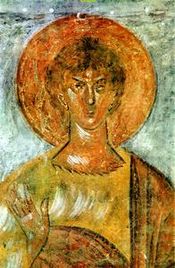
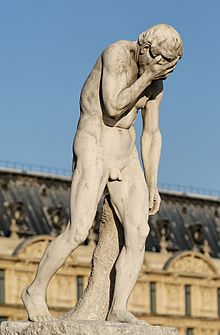
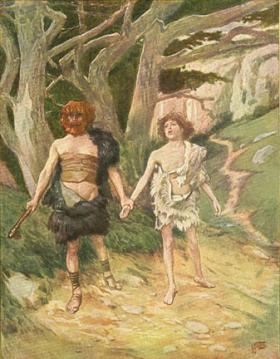
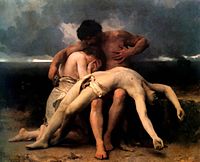
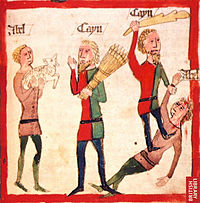
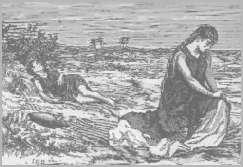 have come from? Could she be mistaken in the sound? No; in the
stillness of the solitude an angel spoke to Hagar. He had been sent
by
have come from? Could she be mistaken in the sound? No; in the
stillness of the solitude an angel spoke to Hagar. He had been sent
by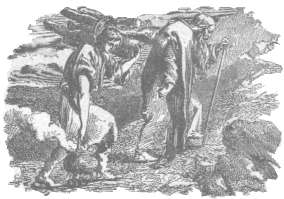 And
And![[Illustration]](zpage020.jpg)
![[Illustration]](zpage023.gif)
